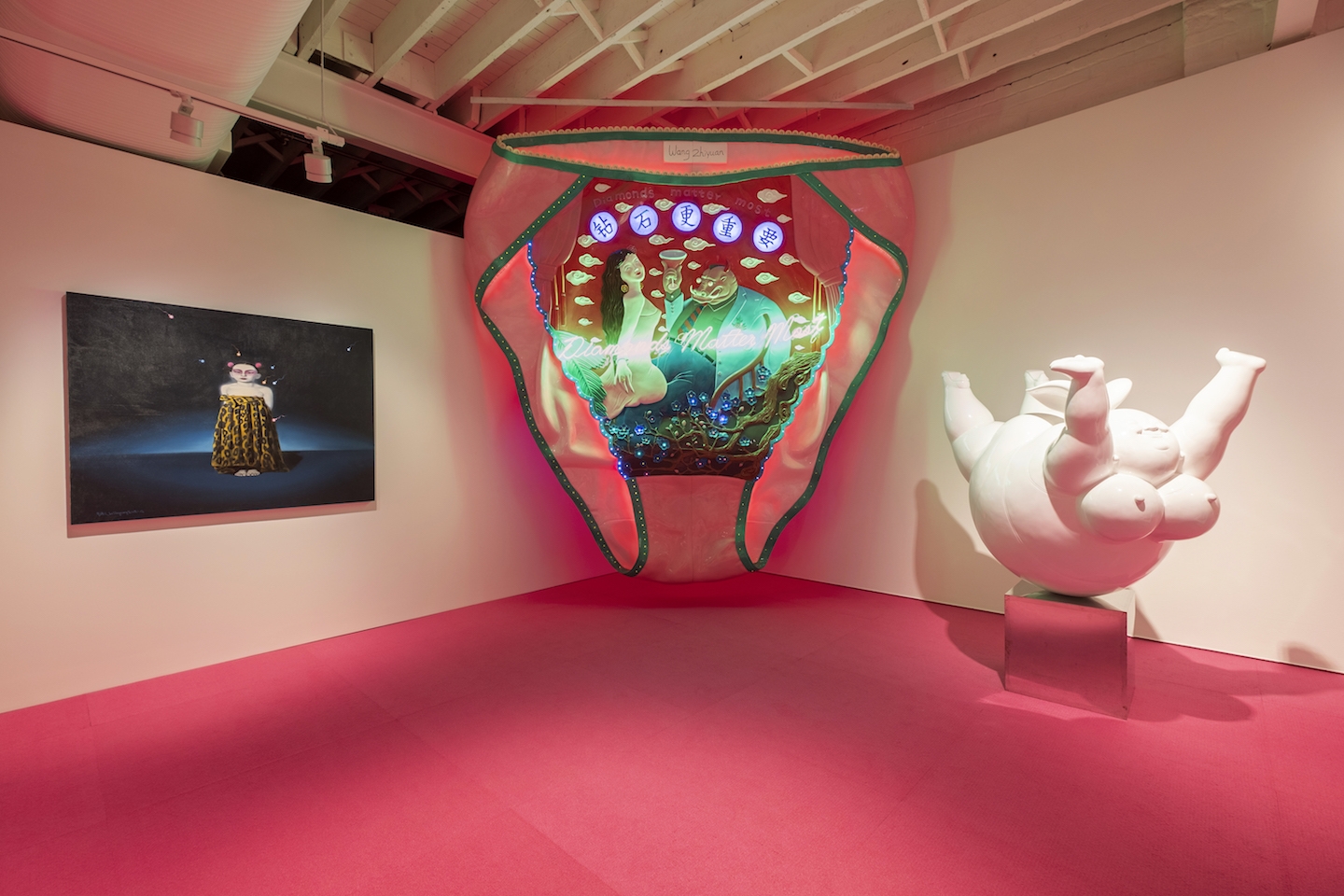Here are rows of schoolchildren, dressed identically in yellow polo shirts and red Young Pioneer neckerchiefs. They raise their arms above their heads and over their chests, moving in unison as if their bodies are attached to invisible strings. A girl in a ponytail flashes a toothy smile at the camera. She hitches up her shorts, a small movement, but big enough to create a glitch in the collective formation. She falls out of sync with her classmates, and in a second the spell is broken.
The Times Are Summoning, a 2007 videowork by Chinese artist Meiya Lin, occupies a darkened chamber on the first floor of Sydney’s White Rabbit Gallery. The work, which is based on the compulsory calisthenics lessons the artist endured as a schoolgirl growing up in Xiamen, unfolds to a dark-yet-jaunty soundtrack: cheery percussion punctuated by barked instructions. It’s hard to come up with a better sonic metaphor for the gallery’s much-anticipated tenth-anniversary exhibition, Then.
The show brings together over 60 artworks from the collection of Judith Neilson, the Zimbabwe-born founder of White Rabbit Gallery and a philanthropist who first started visiting artists’ studios in China during the 1990s, alongside Wang Zhiyuan, the Chinese artist who introduced her to the country’s explosive art scene. Then focuses on defining works from the gallery’s exhibitions programme, showcasing the depth and complexity of a country that’s all too easily flattened and exoticised in the Australian imagination, a mission that White Rabbit, one of Australia’s rare privately funded museums, has undertaken since its inception. Then is also a cultural document of the ways in which China’s dizzying trajectory of globalisation and urbanisation is reshaping and rupturing the country’s social fabric. This surreal new reality is best seen through the artists who – via audacity, artistry and sheer inventiveness – are responding to these shifts in radical and playful ways.
Over the last 35 years, nearly 500 million people have moved to Chinese megacities from rural areas. These migrants often eke out precarious livings as labourers or vendors on the fringes of cities that glitter with wealth, like Shanghai and Beijing. A narrow corridor that leads to The Times Are Summoning plays host to Chinese O spring (2005), Zhang Dali’s elegy for the undocumented workers who have enabled China’s newfound prosperity. Twenty lifesize bodies made of resin, their backs branded with their village of origin, hang upside down from the ceiling. Their ankles are bound like animals awaiting slaughter, their identities as interchangeable as the Uber Eats workers who criss-cross the suburbs of Sydney and Melbourne. These are the bodies of the gig economy, where, trapped in a new kind of wage slavery, people are reduced to meat.
Of course, women have always understood objectification. But throughout art history, Chinese women – like many women across South Asia, Africa and the Pacific – have been fetishised and infantilised, forever deemed objects of consumption by the West. On the second floor of the gallery, photographer Han Lei’s Pan Jinlian Who Performs as a Rabbit Girl (2008) recasts Édouard Manet’s Olympia (1863) as a middle-aged Chinese woman in fishnet socks and bunny ears. She looks squarely at the viewer, chin up, the subject of her own fantasies.
If that image subverts the erotics of looking and longing, Wang Zhiyuan’s Object of Desire (2008) casts romantic want as a consumerist impulse. His enormous fibreglass sculpture of neon-pink underpants hum to the voice of Zhou Xuan, an iconic singer who lived in 1930s Shanghai. As China’s economic imperatives become increasingly bound up in Australia’s future, the work – strange yet strikingly familiar – feels less like an exotic artefact than a recovered memory. Its blinking neon lights evoke a sense of shared cultural nostalgia that also winks at the countries’ intertwined destinies.
But here, Xuan’s plaintive love songs are rendered as cheap and disposable as garish lingerie, the relics of a world that commodifies all that is human in us.
Then at White Rabbit Gallery, Sydney, through 26 January
From the Winter 2019 issue of ArtReview Asia
